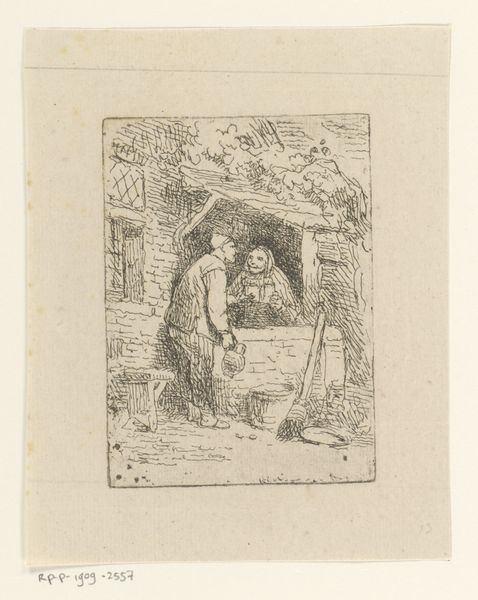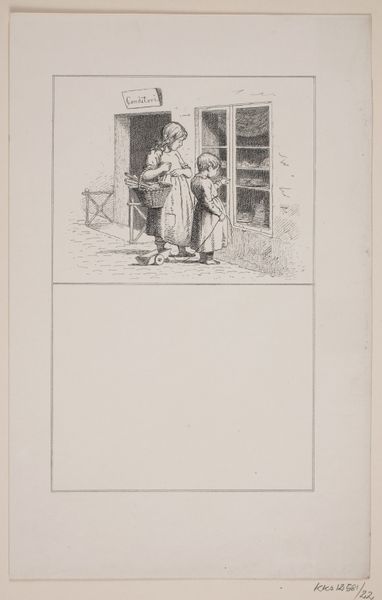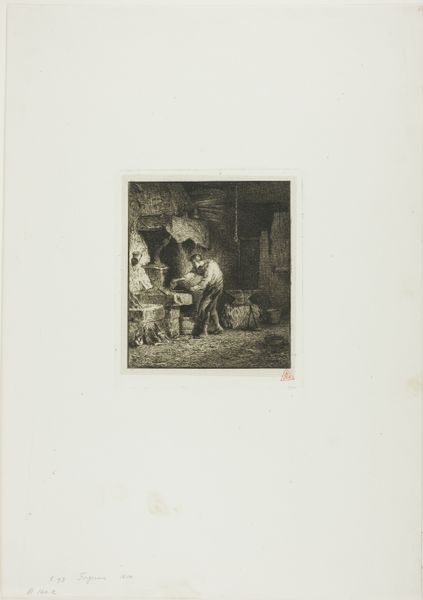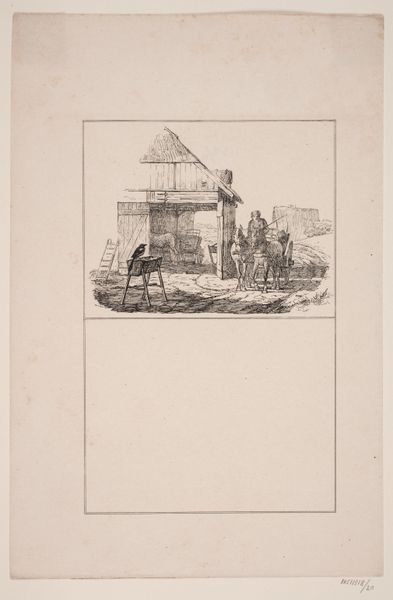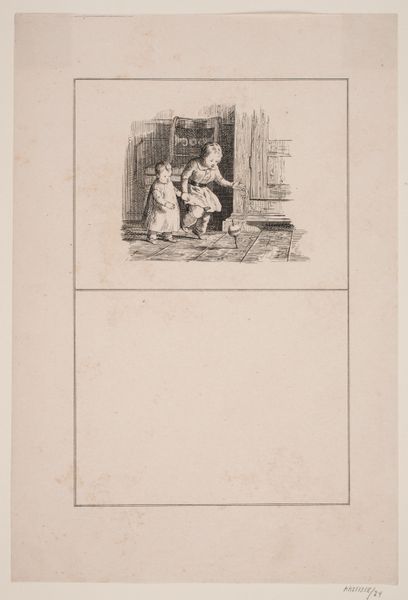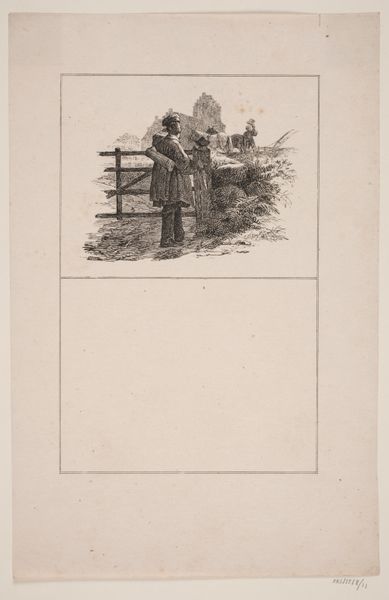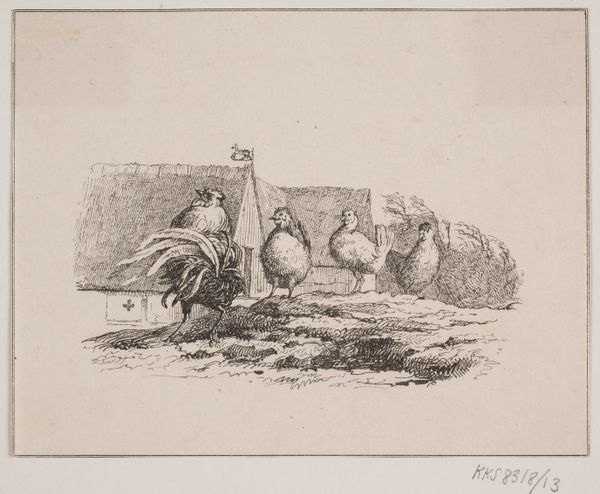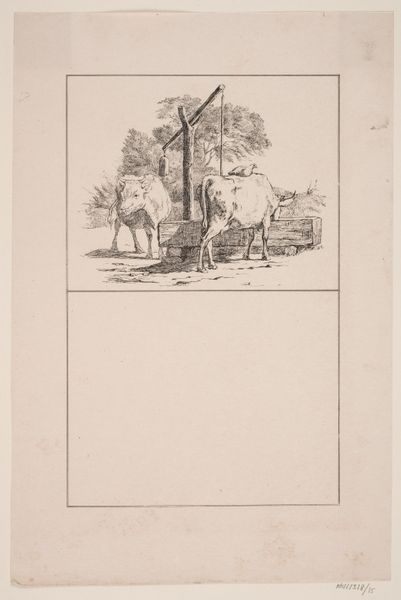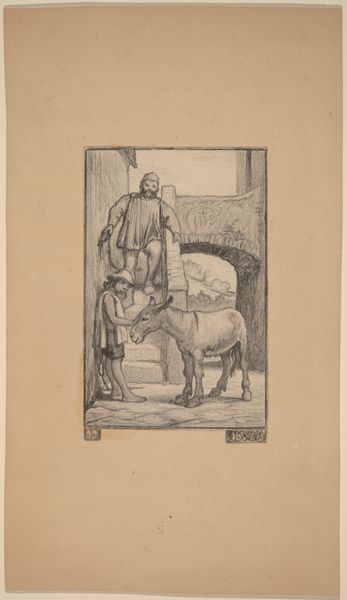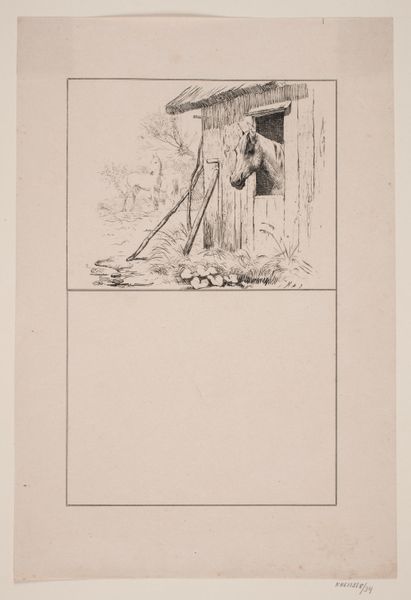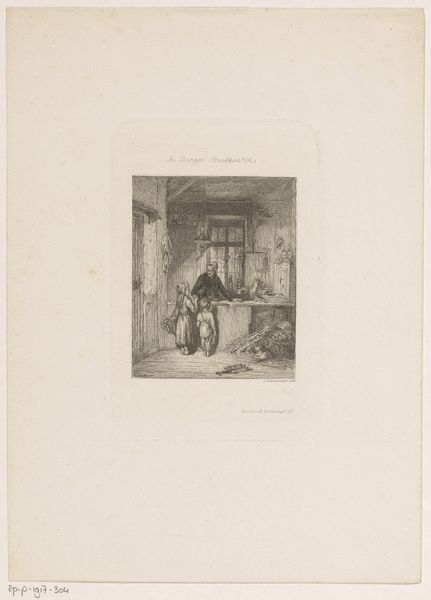
drawing, lithograph, print, etching, paper, ink
#
portrait
#
drawing
#
lithograph
# print
#
etching
#
figuration
#
paper
#
ink
#
genre-painting
#
realism
Dimensions: 259 mm (height) x 173 mm (width) (bladmaal)
Curator: Adolph Kittendorff created this print, "Hundehvalpen," in 1845. The piece, crafted from drawing, lithographic, and etching techniques using ink on paper, depicts two dogs near a dog house. What are your initial thoughts? Editor: Well, immediately there’s a poignant, slightly melancholy mood. The larger dog in the house has such soulful eyes; there is a protective posture combined with a distinct air of weariness. The stark black and white etching emphasizes this contrast, doesn't it? Curator: Absolutely. Considering the period, this genre painting can tell us a lot about the evolving relationship between humans and animals. Dog ownership was shifting; they were moving beyond simply being working animals, and increasingly viewed as companions. Kittendorff positions these dogs within a domestic sphere, literally in their doghouse. Editor: And what an interesting sphere it is! The doghouse itself is a symbol, right? A defined space, a zone of comfort and perhaps captivity. Is the larger dog weary because it has been tied to this home? Also, what’s going on with that harness or bridle on the puppy? There's some implied training or control, potentially clashing with the supposed "companionship" you mentioned. Curator: That is a critical point. While the rising middle class adopted these animals as emotional supports, ingrained utilitarian views did not disappear overnight. Training was important, representing broader socio-cultural norms in how behavior was codified and instilled. The dog becomes a site where the contradictions of freedom and social conditioning played out. Editor: So the harness is both practical and a visible reminder of imposed order? The pup strains away while remaining connected. Visually and symbolically, the bond becomes ambiguous. And the wistful look of the dog in the house hints at a longing beyond its confined domesticity. Fascinating! Curator: Precisely. This artwork is fascinating because of its subtle complexity, and how it weaves multiple historical narratives through a familiar domestic scene. Editor: Yes, and how images like these can subtly reinforce values about both companionship and control, and ultimately, speak to the longer history of our shared, complicated lives with animals.
Comments
No comments
Be the first to comment and join the conversation on the ultimate creative platform.
